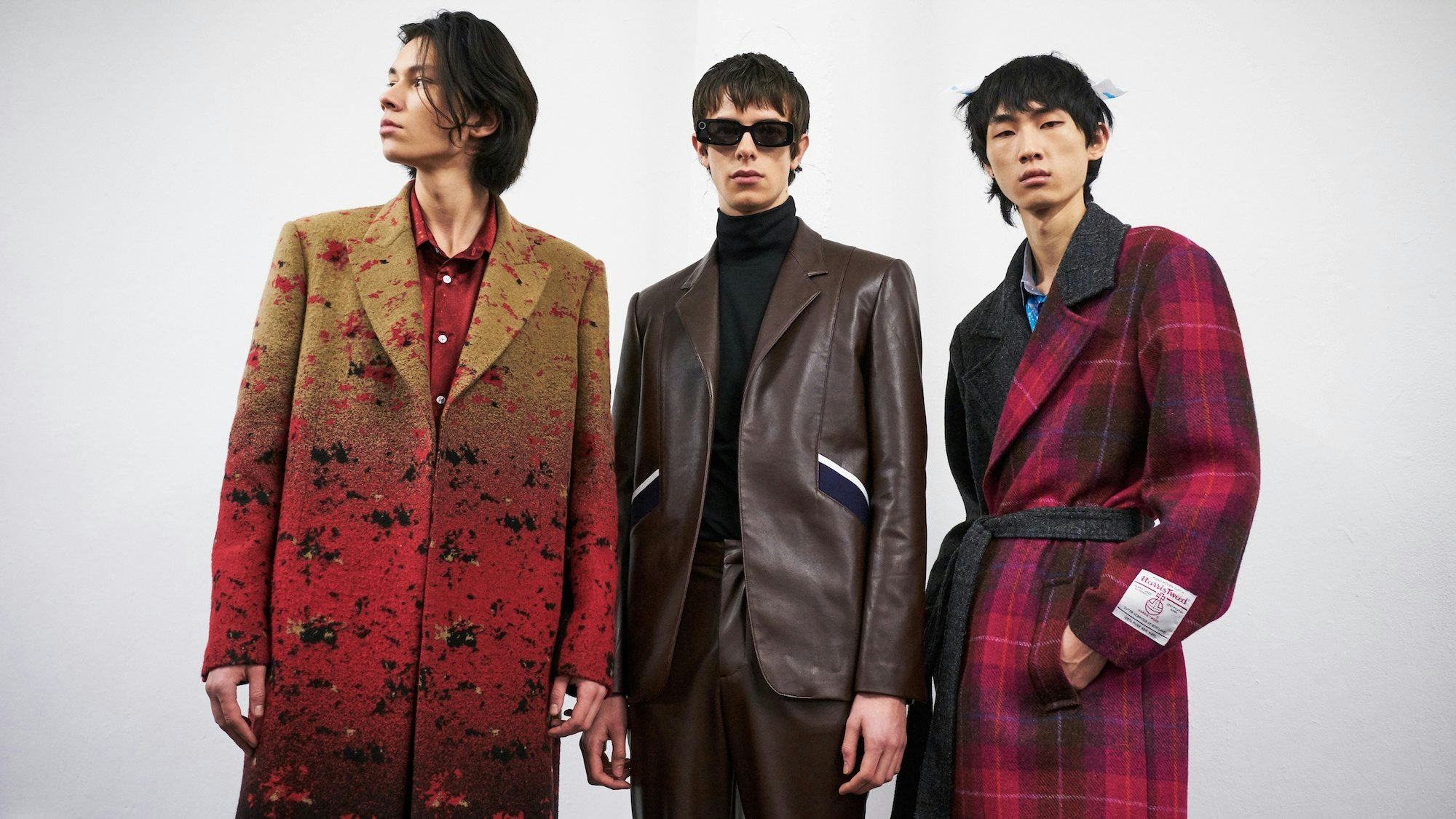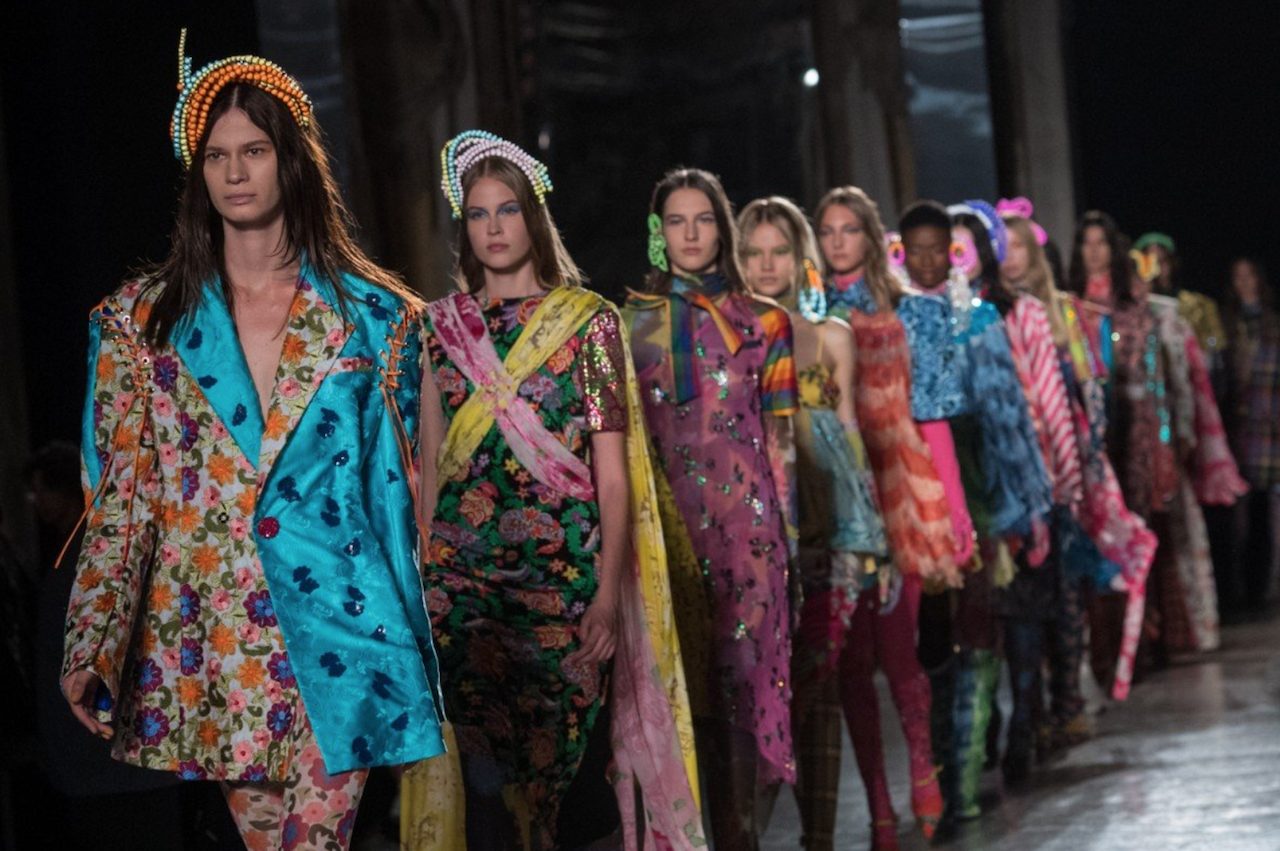With barely a chance to recover from New Year’s Eve, London Fashion Week 2020 kicked off surprisingly early (January 3) with the four-days menswear showcase. LFWM has always been a preferred choice for Chinese designers, yet they are approaching schedules with a new fluidity this season. AW20 is down from previous seasons, featuring only five Chinese designers: Xander Zhou, Pronounce, 1X1, Feng Chen Wang and 8on8.
However, the positives reasons to show in London are still manifold. “In contrast to Milan and Paris, there are less ‘big-name’ shows in London — meaning there is more room for young designers to stand out and become the talking point of the city,” says Ida Petersson, Menswear and Womenswear Buying Director for the dynamic retailer Browns. “London has always had a well-deserved reputation for showcasing unique talent and daring designs, and the new generation of Chinese designers operate so well in this genre.” For Petersson, this means brands are speaking directly to an audience that’s “already onboard and actively looking for newness.”
Jonathan Lee, Senior Area Manager of showroom, Asia, for Tomorrow London Ltd., also suggests that London works particularly well for today’s outpouring Asian creativity, saying, “Menswear design is often more edgy, with a strong personality, so London is a really good fit. It’s more international and is a strong place for menswear designers to show, especially Asian brands from China, Japan, and Korea that want to go overseas.”
Indeed, when compared to other fashion weeks in Asia, LFWM ranks very competitively in terms of ROI on marketing strategies. According to Launchmetrics, the brand performance cloud for the fashion, luxury, and beauty industries, it’s a vital marker for Asian designers looking to make an impact abroad. “LFWM has great potential,” says Alison Bringé, Launchmetrics’ Chief Marketing Officer. “Not only does the U.K. media reach a large audience, but it remains highly influential, and the city is very retail-focused, so many buyers are present and looking to discover the next new thing.”
“I think it’s great that young designers are trying out new cities to get a feel for where they are best suited.”
Using Launchmetrics’ methodology of Media Impact Value (or MIV), SS19’s LFWM generated a total of 5.8 million, 53 percent (3.1 million) of which was represented by media, illustrating the strength of the press in the region. Meanwhile, influencers contributed to 36 percent (2.1 million) of overall MIV for the event. Chinese celebrity Hu Bing, who made an appearance at Feng Chen Wang, was the top-ranking influencer, bringing in 83,000 worth of MIV.
For many Chinese designers, starting at LFWM is often ideal because of familiarity. London can become a second home after finishing their studies, visa permitting. Taiwanese designer Yi-Ling Kuo of 1X1 has been living in London for eight years, and LFWM is, therefore, an obvious platform for her to show her technical knit brand in its third season. “I feel inspired here,” she says. “People are open-minded here, and being based in London, I’m just used to how it works.”
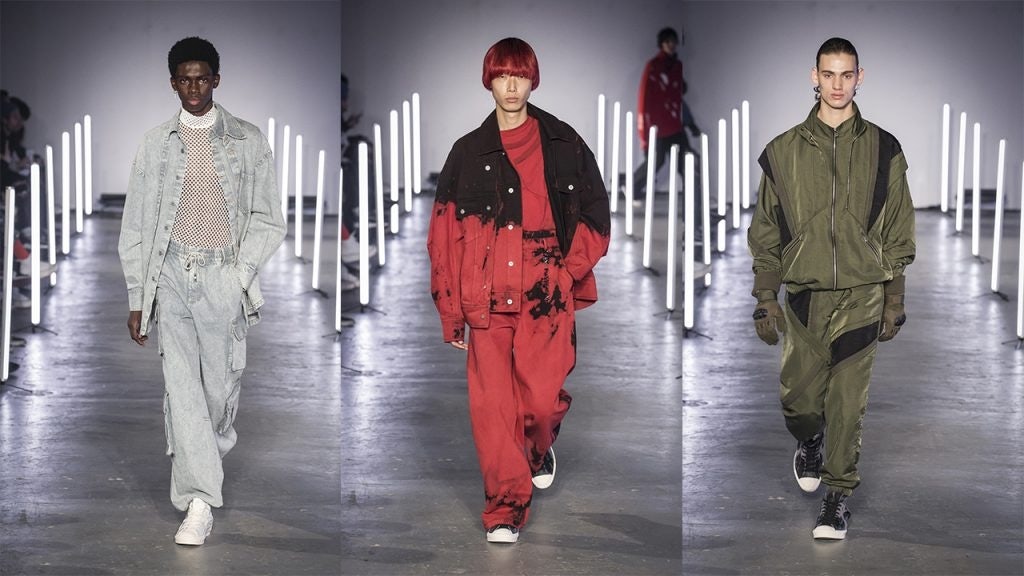
But for Kuo, it’s more about being globalized, and she says that being Chinese doesn’t define her brand. “It simply doesn't matter where you show, or what your nationality is,” she states. “I’m here in London, but I’d love to be on the main stages at some point.” Chinese designers, perhaps due to their newness and cultural impressions, often test various fashion weeks around the world not as the exception but the rule.
Schedule-hopping is not unusual among global brands: McQueens men's line moves around freely, and this season, JW Anderson is moving to Paris, while A-Cold-Wall* is moving to Milan. But moves like these are generally restrained. As a buyer, Petersson explains that schedule-hopping from the bigger brands can cause issues for younger labels. “It gets more complicated when one of the bigger brands goes off and decides to show in another city whilst one city is already starting to show,” she says. “This is sometimes detrimental to the younger brands that tend to get the slots on the first or last day and are more likely to be affected by this.”
She suggests it can be good for younger brands to experiment, though, as this not only adds excitement to a schedule but has practical benefits. “I think it’s great that young designers are trying out new cities to get a feel for where they are best suited, she adds. “It’s especially beneficial where the label is established in an ‘off-schedule’ city like Shanghai, where you won’t benefit from the full force of international buyers.”
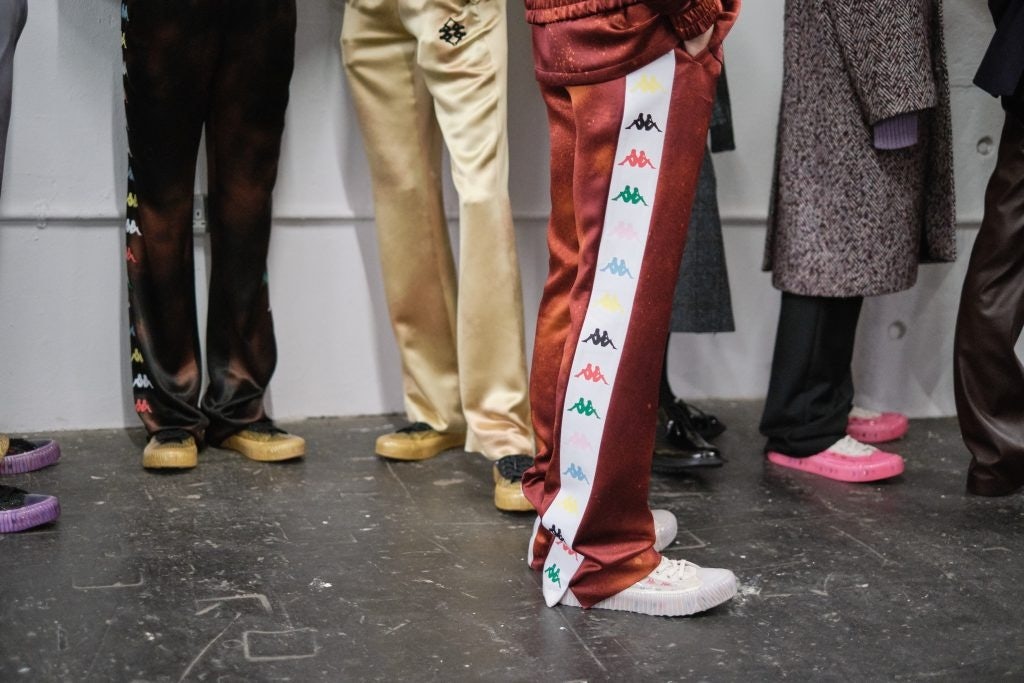
Mu Niu, the founder of Crescent Agency, a Chinese platform that helps brands expand overseas, calls for more stability on the schedules. “The most important thing is consistency — when you start, you need to keep doing it,” Mu says. “These are important schedules for emerging designers. For Chinese menswear, it’s like a test to get feedback. Brands are not doing it for sales, but to let the world see who they are and the community they represent.”
For the last eight years, GQ China has been the primary vehicle for introducing a continuous stream of emerging and innovative Chinese designers to LFWM. Xander Zhou, Sanquanz, and Sean Suen were all early recipients of their support (the latter two have moved on from the London show). This season, the GQ China Presents platform supported 8ON8’s “Wait Rose!” collection, which was a play on the U.K.’s Waitrose supermarket. “8ON8 will stay in London, it works for us here,” explains designer Li Gong. “It’s the most creative place for me, and I’ve got a connection [to it].” Last season, 8ON8 showed at Pitti, which Li admires, but “London pips it for creativity.”
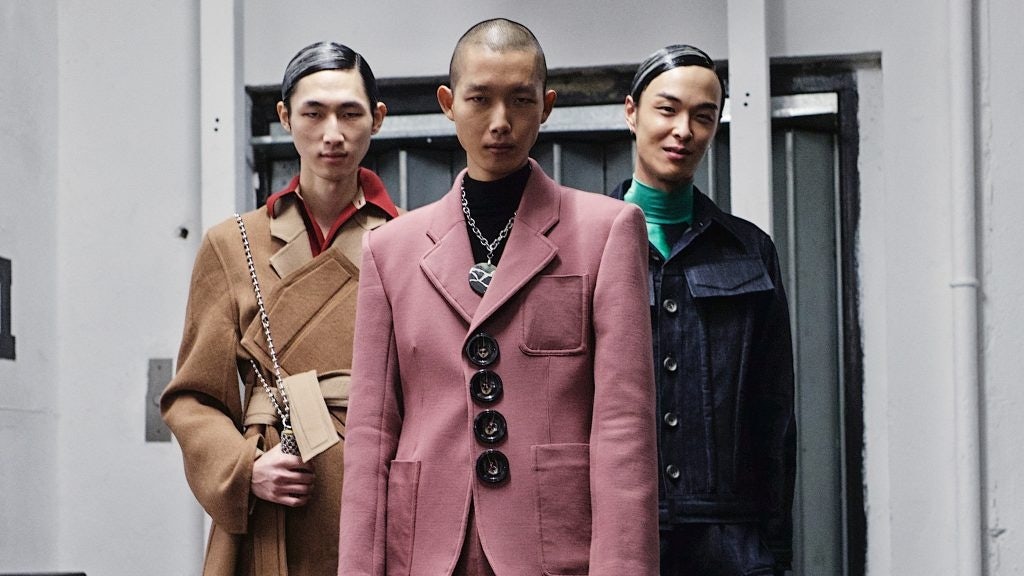
8ON8 also collaborated with the Italian brand Kappa at LFWM, debuting several colorful tracksuits in the collection. Former GQ recipient Pronounce also collaborated with Diesel by previewing three new looks as part of a wider collection that will be released in March. “They saw us in Shanghai, and then we went over to Pitti Immagine Uomo as the first Chinese brand,” says co-designer Li Yishan. “We felt huge pressure, but in London, we feel like we are home. And now, we feel like we are one of the watermarks in Diesel’s history. It's really interesting to bring together East and West.”
As the founder of the eponymous creative production company, Blonstein, Sara Blonstein is no stranger to the schedule fluctuations of Chinese designers.“I think designers [from China] come and go or skip a season, but that’s where the likes of GQ can benefit a designer like Pronounce who we’ve worked with,” says Blonstein. The company has worked with other Chinese clients as well, such as VIP.com and Izzue, and Blonstein believes that many Chinese brands are outshining their London counterparts. “The standard that’s coming out of China is at a Parisian level,” she says. “From the tailoring to the casting, it is exceptional and impacting what British designers are offering.” But, as she points out, they aren’t usually integrated into the local scene. “Sadly, brands can struggle with the guest list, as there’s often a lack of interest,” she states. “Maybe that’s why brands decide to hop around fashion weeks?”
Feng Chen Wang, who recently returned to London from the NYFW schedule, wasn’t lacking in attendees, despite being scheduled for the final day. Her collection, which is inspired by the sunrise over the Wuyi Mountains, took place on a foggy, neon-lit stage designed by Joseph Dejardin. The show’s high-production values, celebrity guest list (courtesy of Karla Otto), and commercial collection — her most impressive yet — may hint at a return to New York or even a move to Paris. “I don't know where I’ll stay at the moment, and both of them [London and New York] are very good cities but very different,” she claims. “They both have very different attitudes.”
Wang continues to integrate herself globally via collaborations, extending her sponsorship deal with Converse while the new collection also featured two new partnerships: Woolmark (she is a finalist for their prestigious 2020 International Woolmark Prize) and Pepsi, who made two items available after the show. This isn’t the first time JD and Wang have collaborated, and Kevin Jiang, President of International Business at JD Fashion and Lifestyle, says it’s Wang’s unique approach first attracted the company. “We are a company rooted in China, and we are really pleased to bring this to a wider audience,” Jiang says. “This is our purpose: to enable domestic designers to expand their opportunities.” Wang’s partnerships, Kappa’s collaboration with 8ON8, and Diesel’s collection with Pronounce suggest the trend for global companies tapping emerging Chinese designers will only grow in 2020.

Chinese entrepreneur and founder of Yu Holdings, Wendy Yu, is acutely aware of the value of Chinese designers on a global stage. In her opinion, physical activations are highly important to build a brand but less so the locale. “Each fashion week represents a different point of view and platform, so brands can capitalize on this to build their image and business development,” she suggests. “There are no rules anymore in fashion, meaning that this is a great time for emerging brands to explore new strategies.”
This is true for the atmospheric London/Hong Kong brand Ka Wa Key, which sees schedules as stepping stones for building fashion week strategies. “As it’s really expensive to put on a show, we go where we have support,” says the brand’s co-founder Jarno Leppanen. Ka Wa Key has shown in London, Finland, New York, Hong Kong, and Shanghai thus far. “London has a great atmosphere, but it’s getting smaller. It has fewer designers, buyers, press, and interest. This year, we go back to New York in February. It’s a great city with great energy,” he states.
Like Ka Wa Key, most Chinese designers on the LFWM schedule featured women's looks as part of their collections in London, further threatening the stability of schedules. London’s incubator Fashion East recently dropped its prestigious MAN platform, adding it into its women's sponsorship. Moreover, fashion weeks in Asia are usually mixed-gender. Former GQ Presents recipient, the US-based Private Policy, has gone one step further and switched to a womenswear schedule, presenting at NYFW in February. “We want to try a different fashion week schedule and keep exploring genderless fashion,” explains co-designer, Siying Qu. “We don’t want to limit buyers or consumers but want them to feel comfortable.” And while they are now, admittedly, “firmly embedded” in New York, past slots at LFWM were useful. “It was a way to have more presence in Europe and open up the market with some shows,” Qu adds. “We met with retailer Selfridges and now they carry us. London men's is very vibrant and exciting, and the city is still on the brand’s radar. Our next plan for London will not be during fashion week, rather, we are looking for opportunities to present differently, like in a popup or a store.”
While it certainly affords emerging designers the freedom to experiment, according to Tomorrow’s Lee, schedule-hopping is not ideal. “I think for some established brands it’s interesting to show in different places. But for young emerging designers, it can be confusing to the industry when a brand keeps swapping around.” Since launching with GQ China, Xander Zhou has consistently shown at LFWM. This season, his conceptual designs exploring multiverses and inclusivity showcased a level of maturity that Lee considers integral to having a solid base. “Now, after four or five years, we really know the brand,” Lee says. “I think it’s a good model for young, emerging Chinese designers to adopt.”
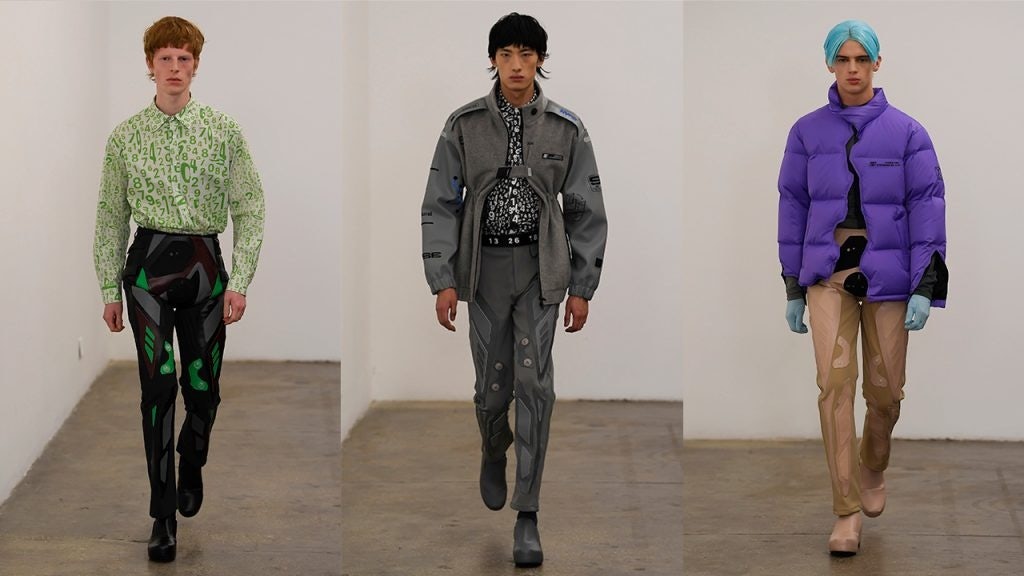
Yet LFWM’s early timeframe was problematic. Ka Wa Key suggested it wasn’t ideal for them, while the London-based duo Dan Shan, who are former regulars at LFWM, opted for a break, instead opting for a showroom at Pitti Immagine Uomo and a show in Shanghai. The Guangzhou-born Danxia Liu, one half of the label explains, saying, “For us, it’s a better timeline to show later. Also, if you show in March or April, you have more chances of standing out. The buyers have a fresh memory. It’s a bit more likely they won't forget what they have seen.”
What’s clear is that showing internationally is important for brands back home — regardless of the place or timing. Standing out is vital, and Asian fashion weeks have a much lower MIV impact than London: An internal report by Launchmetrics stated that across Western channels, SS20 could be valued as follows: 8.2 million in Tokyo, 5.6 million in Seoul, and 2.1 million in Shanghai. As Yu suggests, showing internationally carries “prestige” for Chinese designers, and in this regard, designers need to break out and compete on the global stage. “Chinese consumers appreciate designers who are gaining recognition abroad and are keen to support and celebrate their success,” she adds. “Chinese designers could make this a key part of their marketing strategy.”
On the ground level, brands like Dan Shan are writing a new rulebook by being flexible. Liu is confident that when choosing where to show, brands don’t have to follow pre-existing routes. “These days, it simply doesn't really matter where you show or even what time. Just as long as you produce good content.” This innovative strategy is bound to reverberate globally for seasons to come, but it might be most daringly adopted by Chinese designers.
